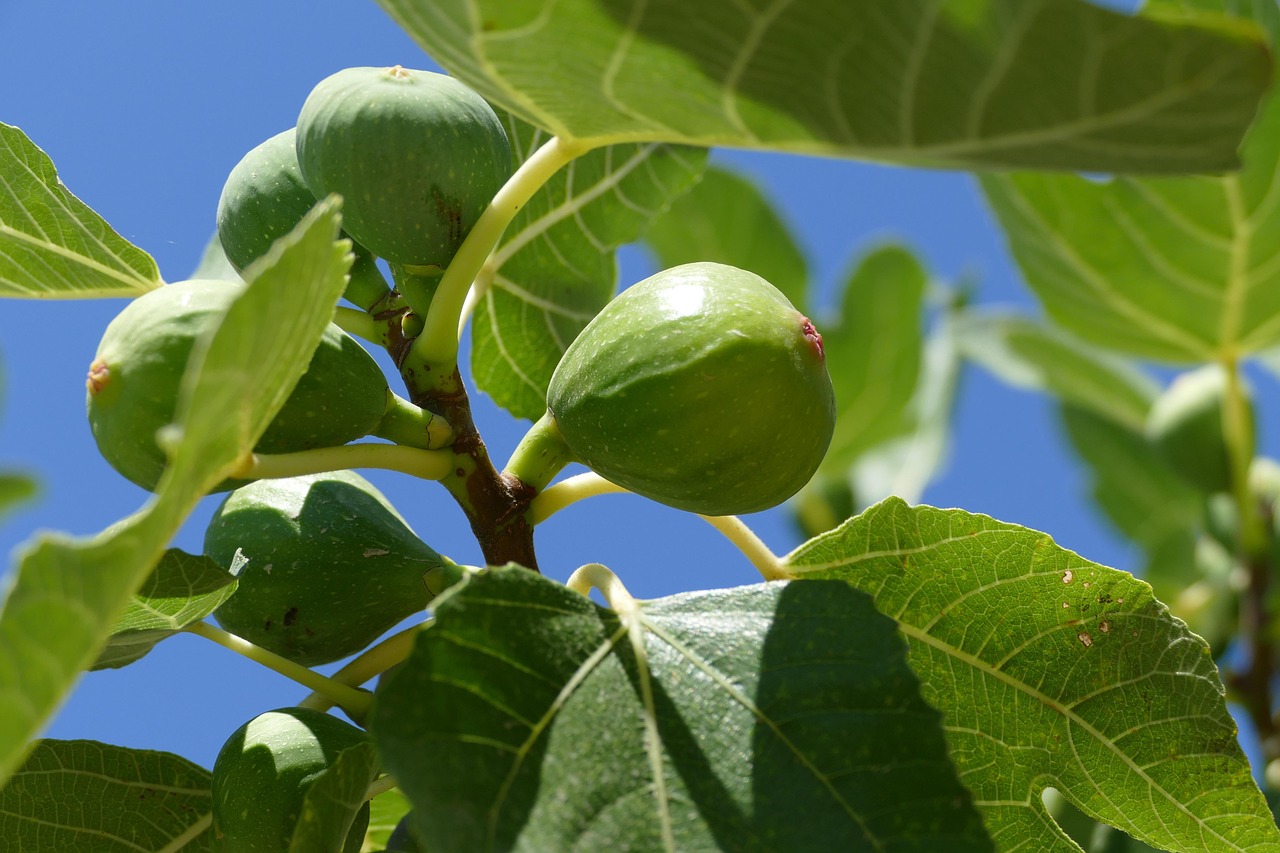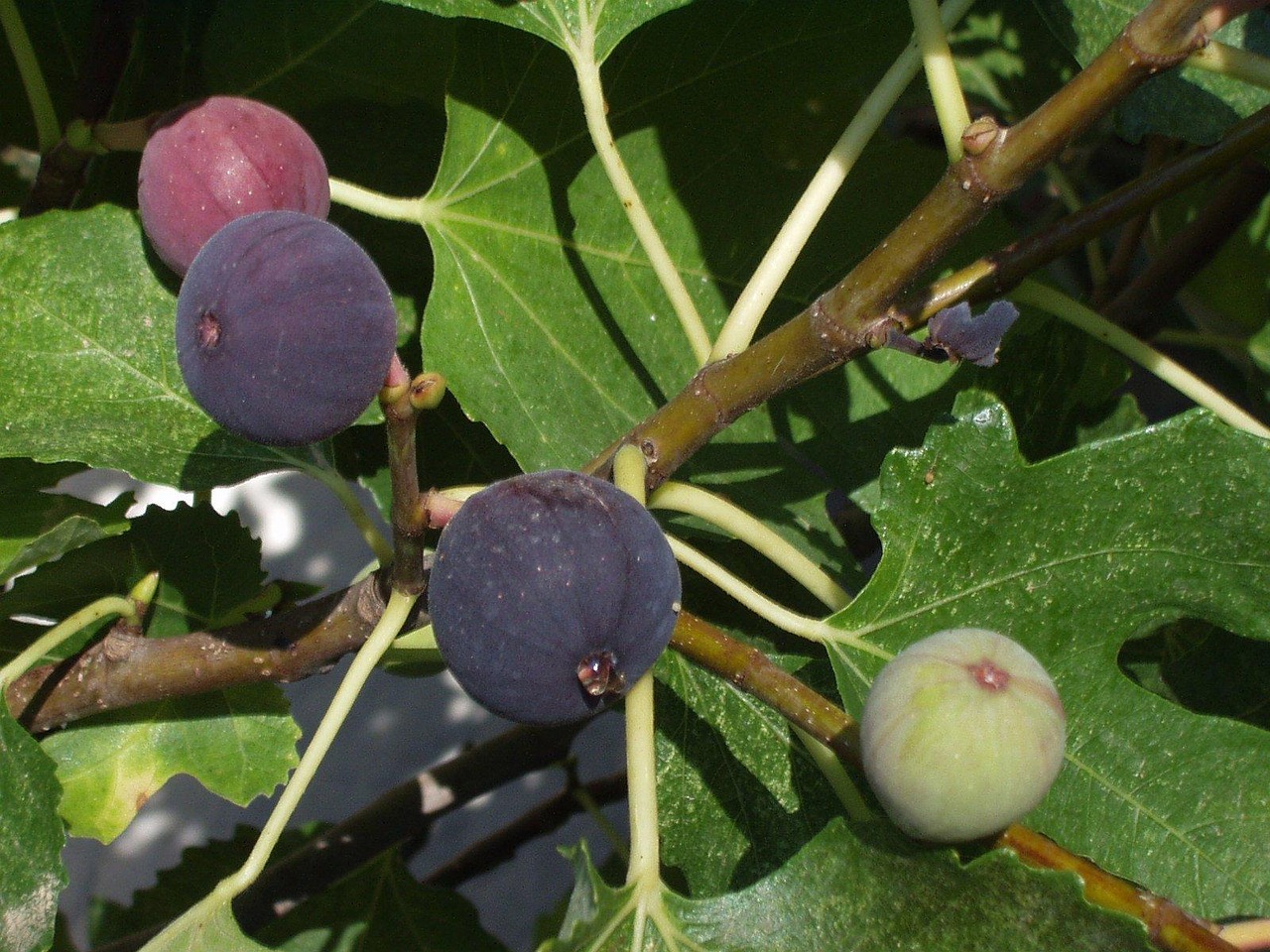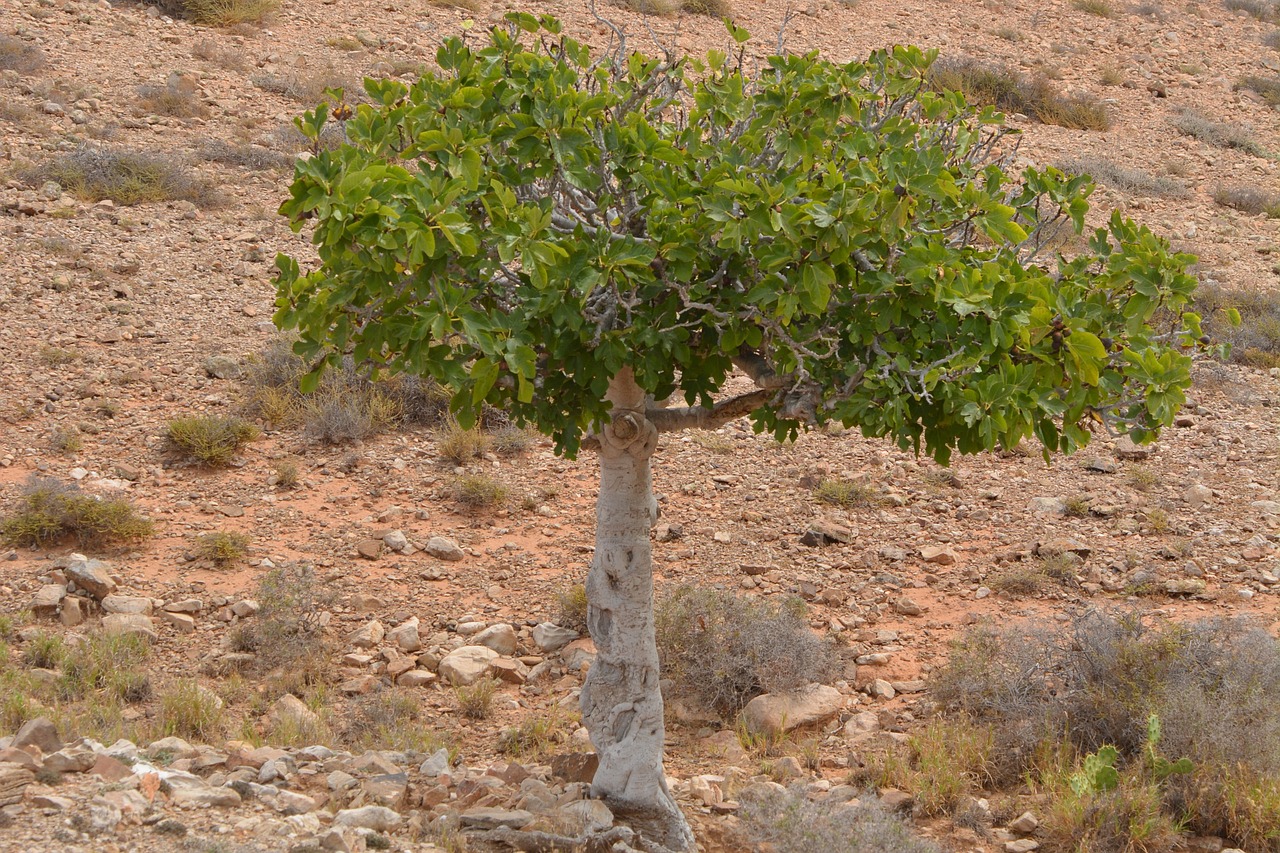Pruning fig trees in tropical greenhouses is crucial for ensuring vigorous growth and exceptional fruit quality while managing plant size. Regular pruning promotes optimal airflow and sunlight penetration, essential factors for fig development within a greenhouse setting. By honing in on proper techniques, growers can enhance yield potential and plant health effectively.
Figs are a popular choice for greenhouse cultivation in tropical regions due to their adaptability and high yield potential. These trees thrive in warm climates and require specific care to maximize their productivity. One of the most crucial aspects of fig tree maintenance is pruning, which plays a vital role in shaping the tree, controlling its size, and ensuring optimal fruit production.

Pruning not only enhances the aesthetic appeal of the fig tree but also significantly influences the overall health of the plant. Healthy trees produce better fruit yields and resist pests and diseases more effectively. In a tropical greenhouse setting, where humidity and temperature can fluctuate, proper pruning techniques are even more important.
Why Prune Fig Trees?
Pruning fig trees serves several purposes that contribute to the success of growing figs in a greenhouse. Some of the key reasons include:
- Promoting Air Circulation: Pruning helps remove dense foliage, allowing air to circulate freely within the tree. Good air circulation reduces the risk of fungal diseases.
- Enhancing Sunlight Penetration: Thinning out branches enables sunlight to reach more parts of the tree, essential for photosynthesis and fruit ripening.
- Controlling Size: Regular pruning keeps fig trees manageable in size, making it easier to care for them in a confined greenhouse space.
- Improving Fruit Quality: By removing excess branches and focusing energy on fewer fruits, the quality and size of the figs are improved.
Understanding when and how to prune fig trees is crucial for achieving these benefits. Timing can vary based on the fig variety and local climate conditions, but generally, pruning should be done during the dormant season, which is typically late winter to early spring. This timing helps minimize stress on the plant and encourages vigorous growth as temperatures rise.

Types of Pruning Techniques
There are various pruning techniques that can be applied to fig trees. Each technique can serve different purposes based on the growth stage of the tree and the desired outcome:
- Heading Back: This involves cutting back the tips of branches to encourage bushier growth and more branching. It is particularly useful for young trees.
- Thinning: This technique removes entire branches to improve air circulation and light penetration. It is essential for maintaining tree health.
- Renewal Pruning: Older trees may benefit from this method, which involves removing old wood to promote new growth, enhancing fruit production.
- Pinching: This is a light form of pruning where the tips of new shoots are pinched off to encourage branching and a fuller canopy.
Tools Needed for Pruning
Having the right tools is essential for effective fig tree pruning. Using sharp and clean tools minimizes damage to the tree and reduces the risk of disease transmission. Here is a list of recommended tools:
- Pruning Shears: Ideal for cutting small branches and stems.
- Loppers: Suitable for thicker branches that cannot be cut with shears.
- Saw: A small pruning saw may be necessary for larger branches.
- Gloves: Protect your hands from cuts and sap.
- Bypass Pruners: These are excellent for clean cuts and reducing damage to living tissue.
Best Practices for Pruning Fig Trees
To ensure successful pruning, following best practices is essential. These include:

- Make Clean Cuts: Use sharp tools to make clean cuts. This promotes faster healing and reduces infection risk.
- Avoid Over-Pruning: Too much pruning can stress the tree. A general rule is to remove no more than 25% of the tree at once.
- Observe Growth Patterns: Pay attention to how your fig tree grows. Adjust your pruning techniques based on its response.
- Seal Cuts if Necessary: For larger cuts, consider sealing with pruning compound to prevent disease.
Implementing these practices will help create a healthy environment for your fig trees, resulting in better yields and more robust plants. Understanding your specific fig variety and its growth habits will also guide your pruning strategy effectively.
Seasonal Pruning Considerations
Pruning fig trees is not a one-time activity. Understanding the seasonal growth patterns of fig trees is vital for effective pruning. Different seasons offer unique opportunities and challenges for managing your fig tree’s health and productivity.
Winter Dormancy
During winter, fig trees enter a period of dormancy. This is the ideal time for significant pruning activities. The tree conserves energy, allowing for more extensive cuts without stressing the plant. Key actions during this period include:

- Removing Dead or Diseased Wood: Inspect the tree for any dead or infected branches and remove them to prevent disease spread.
- Shaping the Tree: Focus on establishing a strong structure by shaping the tree, which will promote better airflow and light penetration in the upcoming growing season.
- Assessing Growth: Evaluate previous growth and productivity to identify areas that need improvement.
Spring Growth
As temperatures rise and fig trees wake from dormancy in spring, new growth begins. This season also presents an opportunity for light pruning. Activities should include:
- Removing Suckers: Suckers are shoots that grow from the base of the tree. Removing them can help direct energy into the main branches for better fruit production.
- Pinching New Growth: Lightly pinching new shoots encourages bushier growth and can enhance fruiting potential.
- Monitoring Pests: Keep an eye out for pests as new growth emerges, as they can hinder the health of your fig tree.
Pruning Techniques Based on Fig Variety
Not all fig trees are the same, and different varieties may require specific pruning techniques. Below is a breakdown of common fig varieties and their unique pruning needs:
| Fig Variety | Pruning Technique | Notes |
|---|---|---|
| Brown Turkey | Light thinning and heading back | This variety benefits from maintaining a balanced structure for fruit production. |
| Celeste | Renewal pruning | Older branches should be removed to encourage new growth, as this variety produces on new wood. |
| Smyrna | Moderate pruning with emphasis on shaping | This variety requires careful shaping to ensure proper pollination and fruit set. |
| Kadota | Thinning | Focus on removing crowded branches to improve sunlight exposure and air circulation. |
Pest and Disease Management During Pruning
Pests and diseases can significantly impact fig tree health if not managed properly. Incorporating pest management strategies into your pruning routine will help maintain a healthy greenhouse environment. Here are some common pests and diseases to watch for:
- Fig Beetles: These pests can damage both leaves and fruit. Regular inspections are essential to catch infestations early.
- Scale Insects: Scale can weaken trees by sucking sap. Pruning affected branches can help control their spread.
- Fungal Diseases: Fungal infections thrive in humid conditions. Prune away infected leaves promptly to prevent further spread.
- Bacterial Spot: This disease manifests as leaf spots. Remove affected leaves during pruning to minimize impact.
In addition to pruning, consider implementing integrated pest management (IPM) practices. This approach combines biological, cultural, physical, and chemical controls to effectively manage pests while minimizing harm to beneficial organisms.
The Role of Fertilization After Pruning
After pruning, it is essential to support your fig trees with proper fertilization. Pruning can create stress, and trees may benefit from nutrients to promote recovery and growth. Key points to consider include:
- Selecting the Right Fertilizer: Use a balanced fertilizer designed for fruiting plants, rich in nitrogen, phosphorus, and potassium.
- Timing of Application: Fertilize shortly after pruning to provide essential nutrients during the active growing season.
- Avoid Over-Fertilization: Too much fertilizer can lead to excessive foliage growth at the expense of fruit production.
By understanding these aspects of fertilization, you can enhance your fig tree’s recovery after pruning, leading to healthier plants and better yields in your tropical greenhouse.
Watering Practices Post-Pruning
After pruning, proper watering practices are essential for helping fig trees recover and thrive. Watering needs can vary based on environmental conditions, tree age, and growth stage. Here are some key aspects to consider:
Understanding Water Requirements
Fig trees generally prefer consistent moisture, but overwatering can lead to root rot. Therefore, understanding the water requirements based on the season and plant growth is crucial. Important factors include:
- Soil Type: Sandy soils drain quickly and may require more frequent watering than clay soils, which retain moisture.
- Tree Age: Younger trees with smaller root systems may need more frequent watering compared to established trees.
- Weather Conditions: Hot and dry conditions increase water needs, while cooler, rainy periods may reduce them.
Watering Techniques
Implementing effective watering techniques can optimize moisture availability for your fig trees. Some recommended methods include:
- Drip Irrigation: This method delivers water directly to the root zone, minimizing evaporation and ensuring deep water penetration.
- Soaker Hoses: Soaker hoses can be laid around the base of the tree, providing consistent moisture without wetting the foliage.
- Mulching: Applying organic mulch around the base of the tree helps retain soil moisture and suppresses weed growth.
Monitoring for Stress Signs
After pruning, monitoring your fig trees for signs of stress is essential. Stress can manifest in various ways, and early detection allows for timely interventions. Common indicators of stress include:
- Wilting Leaves: Wilting may suggest insufficient water, especially during warm weather. Adjust watering as needed.
- Yellowing Leaves: This can indicate nutrient deficiencies or overwatering. Addressing the fertilization routine may be necessary.
- Pest Infestations: Stressed trees are more susceptible to pests. Regular checks can help catch and manage infestations early.
- Poor Fruit Development: If fruit size and quality diminish, it could be a sign of inadequate care post-pruning.
Common Challenges in Fig Tree Pruning
Fig tree pruning can present several challenges that growers need to navigate to ensure successful management. Below are some common issues encountered during the pruning process:
Pest and Disease Issues
Pests and diseases can complicate pruning efforts. As mentioned previously, fig trees are prone to certain pests and diseases. The best strategies to mitigate these challenges include:
- Regular Inspections: Frequent inspections before and after pruning help identify any issues early.
- Sanitizing Tools: Always sanitize pruning tools before use to prevent spreading diseases from one tree to another.
- Using Resistant Varieties: Selecting fig varieties that are more resistant to local pests and diseases can reduce long-term challenges.
Weather Conditions
Adverse weather conditions can affect pruning outcomes. For instance, heavy rains or high humidity can promote fungal diseases. Strategies to manage weather-related challenges include:
- Timing Pruning Wisely: Schedule pruning when weather conditions are favorable, ideally on dry days.
- Providing Adequate Drainage: Ensure that your greenhouse is well-ventilated and has proper drainage to prevent water accumulation.
- Covering Trees if Necessary: In extreme weather events, consider covering trees temporarily to protect them from damage.
Advanced Pruning Techniques for Experienced Growers
For those with experience in fig tree cultivation, advanced pruning techniques can be applied to enhance tree health and productivity further. These techniques involve a deeper understanding of the plant’s growth habits and may include:
Crown Thinning
Crown thinning involves selectively removing branches within the canopy to improve light penetration and air circulation without significantly altering the overall shape of the tree. This technique is beneficial for older fig trees that may become dense over time.
Espalier Techniques
Espalier is a method of training plants against a wall or trellis. This technique requires careful planning and regular maintenance but can create visually stunning displays while optimizing space in a greenhouse setting.
Coppicing
Coppicing involves cutting back a tree to ground level, allowing new shoots to emerge from the base. This technique can rejuvenate older trees but should be used cautiously as it significantly reduces fruit production for one or two growing seasons.
Utilizing these advanced techniques requires knowledge of each method’s potential impact on tree health and productivity. As you gain experience with fig tree pruning, consider incorporating these strategies into your care regimen to maximize your figs’ potential in your tropical greenhouse.
Maintaining a Healthy Greenhouse Environment
In addition to pruning, maintaining a healthy greenhouse environment is crucial for the success of fig trees. The conditions within the greenhouse can significantly influence the growth, yield, and overall health of the plants. Here are some essential factors to consider:
Temperature Control
Fig trees thrive in warm temperatures, but extreme heat can stress the plants. Ensuring that the greenhouse maintains a stable temperature is essential. Some strategies include:
- Ventilation: Proper ventilation prevents overheating. Use vents, fans, or exhaust systems to regulate air circulation.
- Shade Cloths: In extremely hot weather, using shade cloths can help reduce direct sunlight exposure and regulate temperatures.
- Heating Systems: During cooler months, consider installing heating systems to maintain optimal temperatures for growth.
Humidity Management
Humidity levels play a vital role in plant health. Fig trees prefer moderate humidity levels. Too much moisture can lead to fungal diseases, while too little can cause stress. Strategies to manage humidity include:
- Humidity Monitors: Use hygrometers to monitor humidity levels regularly and adjust as necessary.
- Watering Practices: Watering at the right times and using appropriate methods can help maintain ideal humidity levels.
- Dehumidifiers: In cases of excessive humidity, consider using dehumidifiers to remove excess moisture from the air.
Pest and Disease Prevention Strategies
Preventing pests and diseases is an ongoing task in a tropical greenhouse. Here are several proactive measures you can take:
- Companion Planting: Planting companion plants can attract beneficial insects that help control pests naturally.
- Regular Cleaning: Keep the greenhouse tidy by removing fallen leaves and debris that can harbor pests and diseases.
- Biological Controls: Introducing natural predators like ladybugs can help manage pest populations without chemical treatments.
Understanding Fig Tree Varieties and Their Needs
Understanding the specific needs of different fig varieties can greatly enhance your pruning and care efforts. Each variety has unique characteristics regarding growth habits, pest resistance, and fruiting patterns. Here are a few additional varieties to consider for your greenhouse:
- Adriatic: Known for its sweet flavor, this variety thrives with moderate pruning focusing on shaping and maintaining airflow.
- Smyrna: Requires careful attention to pollination and may need special pruning techniques to ensure successful fruiting.
- White Adriatic: This variety produces large fruits and benefits from regular thinning and heading back to promote healthy growth.
Researching each variety’s unique characteristics will help you tailor your pruning and care strategies effectively.
Final Thoughts
The journey of growing fig trees in a tropical greenhouse involves a combination of art and science. Pruning is a fundamental practice that significantly influences tree health and fruit production. By implementing proper techniques, understanding seasonal needs, and fostering a suitable greenhouse environment, you can enjoy bountiful harvests of delicious figs.
In summary, successful fig tree pruning requires careful planning, knowledge of specific tree varieties, and an understanding of environmental factors. Maintaining optimal conditions in your greenhouse will support the overall health of your fig trees. Remember to monitor for signs of stress, manage pests proactively, and adapt your practices based on what works best for your specific growing conditions.
As you continue your fig-growing journey, keep exploring new techniques, stay informed about best practices, and enjoy the rewarding experience of nurturing these wonderful trees in your tropical greenhouse.
